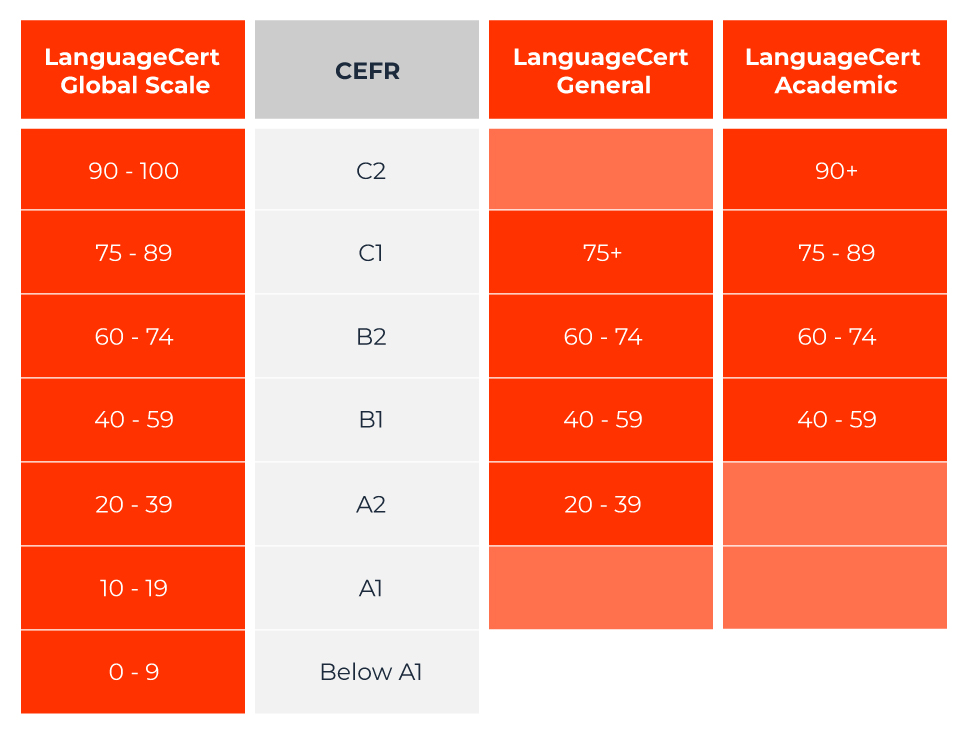The LanguageCert System (LS)
The LanguageCert System is a set of English language tests developed, evaluated, and managed using an integrated, standardised, and assured approach. Both England’s and Wales’s qualifications regulators, Ofqual and Qualifications Wales, recognise and regulate our English language tests.
The LanguageCert System tests derive from extensive item banks of pre-tested and calibrated material, and associated validation research, based on an established candidature of LanguageCert tests and exams aligned to a common underlying measurement scale. To date, the LanguageCert System has based itself on tests which cover a single CEFR level, with the exception of the LanguageCert Test of English (LTE).
Following feedback from extensive use of the LanguageCert System around the world, the LanguageCert System now also includes two multi-level test variants aimed at workers and migrants, and tertiary education applicants. These are the LanguageCert General and Academic tests.
The LanguageCert Global Scale
The LanguageCert system is based on a measurement scale, the Global Scale, which is aligned to the Common European Framework of Reference (CEFR) and can, in turn, be aligned to other scales as required. The Global Scale measures from 0-100 and provides candidates, employers, education institutions and government agencies an easy-to-understand results system (Milanovic et al., 2023). The Score Report states an overall score, the overall CEFR level of attainment reached, and the score for each of the skills using both the Global scale and the CEFR level of attainment.
 |
||
LanguageCert General and LanguageCert Academic are designed for candidates who are not native speakers of English and who wish to achieve a high quality, internationally recognised qualification in English that is available and recognised worldwide. They are suitable for candidates who are preparing for entry to higher education, or professional employment in the UK or elsewhere, or for candidates who need to demonstrate that they have met the required level of English by passing a test with a Home Office approved Secure English Language Testing (SELT) provider. Both qualifications reference the descriptions of language proficiency in the Common European Framework of Reference for Languages (CEFR).
LanguageCert General and LanguageCert Academic measure proficiency in the same way, to the same scale, using the same task types. The two tests have been designed and developed according to the same standard procedures. The test delivery processes and scoring methods are identical.LanguageCert places exam validity and reliability at the heart of its qualification development processes. LanguageCert Academic and LanguageCert General qualifications were officially launched in 2023, backed with extensive pretesting and trialling of test materials to ensure fairness, fitness-for-purpose, and comparability.

